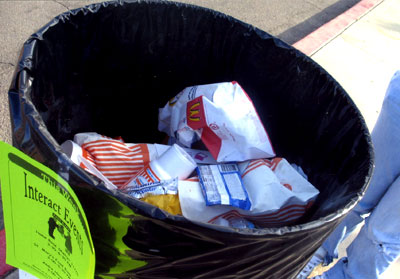All Nonfiction
- Bullying
- Books
- Academic
- Author Interviews
- Celebrity interviews
- College Articles
- College Essays
- Educator of the Year
- Heroes
- Interviews
- Memoir
- Personal Experience
- Sports
- Travel & Culture
All Opinions
- Bullying
- Current Events / Politics
- Discrimination
- Drugs / Alcohol / Smoking
- Entertainment / Celebrities
- Environment
- Love / Relationships
- Movies / Music / TV
- Pop Culture / Trends
- School / College
- Social Issues / Civics
- Spirituality / Religion
- Sports / Hobbies
All Hot Topics
- Bullying
- Community Service
- Environment
- Health
- Letters to the Editor
- Pride & Prejudice
- What Matters
- Back
Summer Guide
- Program Links
- Program Reviews
- Back
College Guide
- College Links
- College Reviews
- College Essays
- College Articles
- Back
You Are What You Eat MAG
Microwave popcorn: $2.29. Rice Krispies: $2.99. Honeydew: $0.79 a pound. Two dozen frozen TV dinners: $48.95. Looking up at the customer, I politely tell him the total. As he swipes his credit card and I review the order, I remember that I had heard he is getting a divorce. Well, that explains the TV dinners, I think to myself.
Working as a cashier at a supermarket may seem like a fairly uninteresting job, but it isn’t. During a typical eight-hour weekend shift, I often ring up 150 customers, many of whom I’ve known since birth. More than conversations I may have had with them, my customers’ groceries give me accurate portraits of their lives.
There’s my seventh-grade health teacher who warned our class against smoking, yet routinely buys several cartons. There’s the young mother who uses food stamps to buy food for her three children, yet spends $50 on alcohol each week. There’s the married mayor who frequently comes in to shop with one of his two mistresses. And there’s my elderly neighbor, whose only satisfaction is buying $100 of canned goods for the poor each week. Next in line is the housewife who always buys a card to send to her husband in Iraq.
The groceries that I scan every day represent the culinary and emotional needs of my customers, neighbors, and friends. The phrase “you are what you eat” gains new meaning in my checkout line.
I have heard that the best way to learn about a person is to have a meal with him. I would argue that you could find out just as much by asking, “Paper or plastic?” and then looking inside.

Similar Articles
JOIN THE DISCUSSION
This article has 2 comments.

0 articles 0 photos 12292 comments